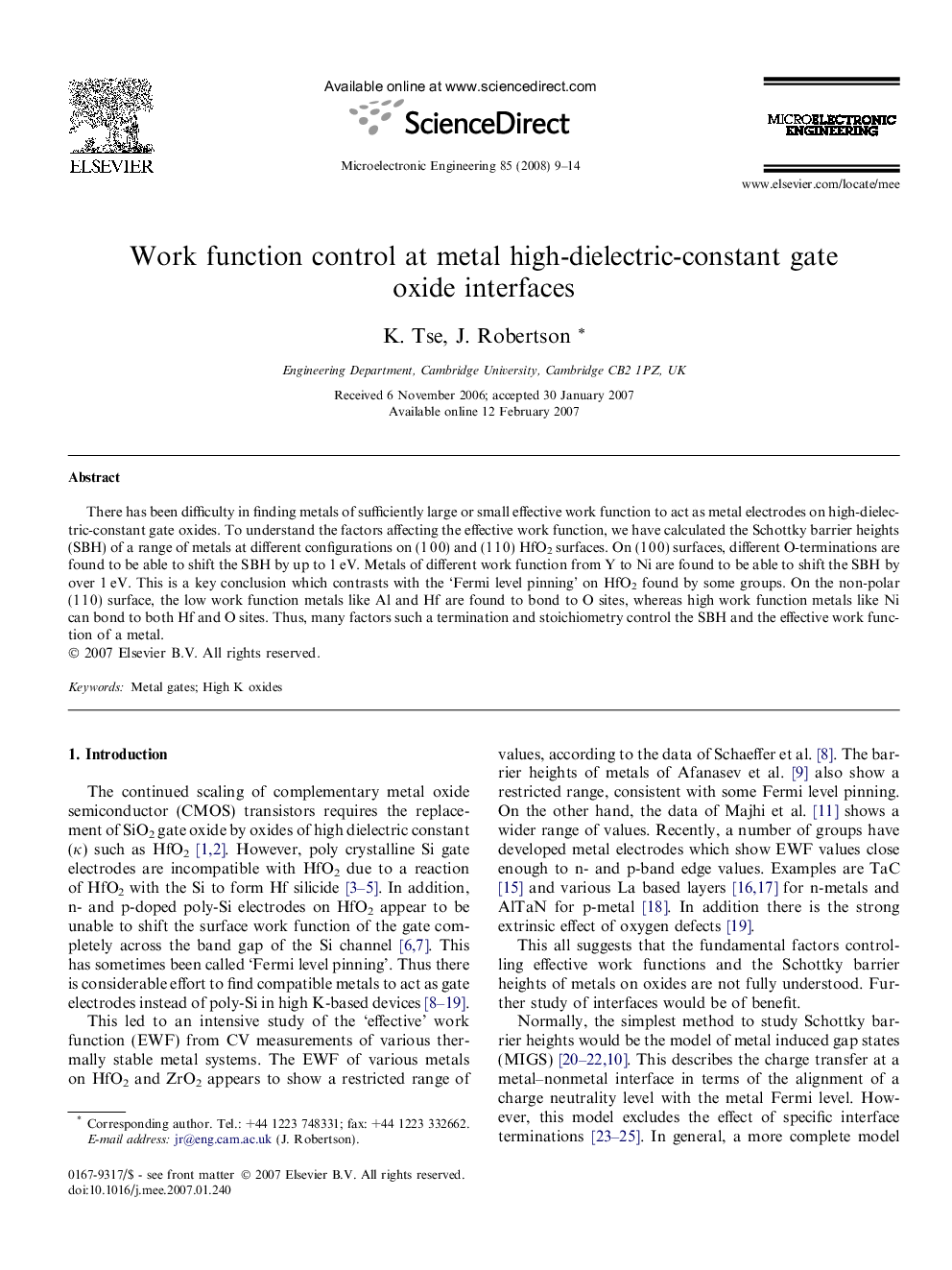| Article ID | Journal | Published Year | Pages | File Type |
|---|---|---|---|---|
| 541681 | Microelectronic Engineering | 2008 | 6 Pages |
There has been difficulty in finding metals of sufficiently large or small effective work function to act as metal electrodes on high-dielectric-constant gate oxides. To understand the factors affecting the effective work function, we have calculated the Schottky barrier heights (SBH) of a range of metals at different configurations on (1 0 0) and (1 1 0) HfO2 surfaces. On (1 0 0) surfaces, different O-terminations are found to be able to shift the SBH by up to 1 eV. Metals of different work function from Y to Ni are found to be able to shift the SBH by over 1 eV. This is a key conclusion which contrasts with the ‘Fermi level pinning’ on HfO2 found by some groups. On the non-polar (1 1 0) surface, the low work function metals like Al and Hf are found to bond to O sites, whereas high work function metals like Ni can bond to both Hf and O sites. Thus, many factors such a termination and stoichiometry control the SBH and the effective work function of a metal.
